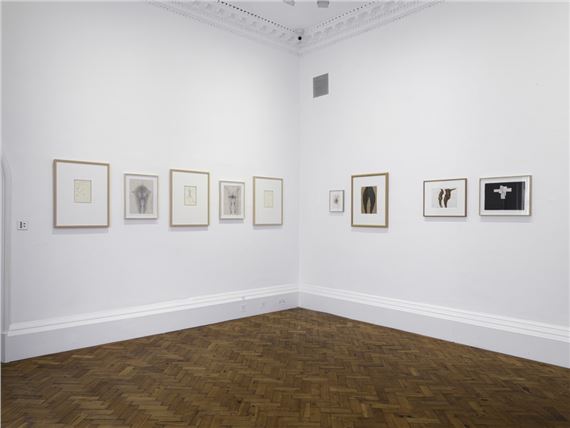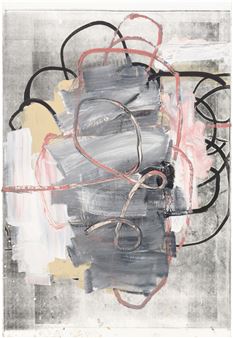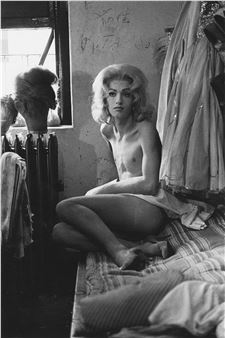SENSE: Beuys / Gormley. A conversation through drawing
Presented concurrently with Joseph Beuys: 40 Years of Drawing, an exhibition of 100 works from the Joseph Beuys family dating from the 1940s to the 1980s, which are shown for the first time in the UK.
Beuys and I found in drawing a fertile ground, which runs parallel to those actions that we have found necessary to make on and with the world. вҖ” Antony Gormley, 2022
Curated by Antony Gormley, this exhibition in the Chapel Gallery at Thaddaeus Ropac London places the artistвҖҷs drawings in conversation with those by the prominent post-war artist, Joseph Beuys. Spanning three decades, from the 1950s to the mid-1970s, the selection of BeuysвҖҷs drawings illuminates the strong relationship that Gormley has developed with the German artistвҖҷs work. The presentation of GormleyвҖҷs own drawings, which date from 1984 to 2021, further highlights the two artistsвҖҷ shared ground. What emerges is a joint interest in reconceptualising human relations with the natural world, social networks and the built environment.
Gormley describes Beuys as вҖҳsomebody who is trying to think very clearly about repositioning the human being within wider systems of exchange and transformation.вҖҷ He is drawn to the вҖҳworks that disperse the idea of the bodyвҖҷ so that it is not вҖҳdefined by its appearance or its bounding condition, but is investigated as a zone of transformation.вҖҷ In his own drawings, Gormley also visualises a conceptualisation of the extended body through his use of unconventional mediums; deer blood and casein, which generate fluid corporeal forms that disperse across the page, assert the resonant potential of his materials (another preoccupation shared with Beuys).
Beuys experienced the physical process of drawing as an essential means through which to crystalise his thoughts. In turn, Gormley describes вҖҳthe act of drawing as a form of tuning.вҖҷ For him, as for Beuys, it is conceived as вҖҳa necessary daily activity in which thought is made physical and grounded.вҖҷ The dual presentation asserts the fundamental role of drawing to both artistsвҖҷ practices, even while the distinct personal, temporal and geographical contexts in which they worked open up generative spaces of difference.

Recommended for you
Presented concurrently with Joseph Beuys: 40 Years of Drawing, an exhibition of 100 works from the Joseph Beuys family dating from the 1940s to the 1980s, which are shown for the first time in the UK.
Beuys and I found in drawing a fertile ground, which runs parallel to those actions that we have found necessary to make on and with the world. вҖ” Antony Gormley, 2022
Curated by Antony Gormley, this exhibition in the Chapel Gallery at Thaddaeus Ropac London places the artistвҖҷs drawings in conversation with those by the prominent post-war artist, Joseph Beuys. Spanning three decades, from the 1950s to the mid-1970s, the selection of BeuysвҖҷs drawings illuminates the strong relationship that Gormley has developed with the German artistвҖҷs work. The presentation of GormleyвҖҷs own drawings, which date from 1984 to 2021, further highlights the two artistsвҖҷ shared ground. What emerges is a joint interest in reconceptualising human relations with the natural world, social networks and the built environment.
Gormley describes Beuys as вҖҳsomebody who is trying to think very clearly about repositioning the human being within wider systems of exchange and transformation.вҖҷ He is drawn to the вҖҳworks that disperse the idea of the bodyвҖҷ so that it is not вҖҳdefined by its appearance or its bounding condition, but is investigated as a zone of transformation.вҖҷ In his own drawings, Gormley also visualises a conceptualisation of the extended body through his use of unconventional mediums; deer blood and casein, which generate fluid corporeal forms that disperse across the page, assert the resonant potential of his materials (another preoccupation shared with Beuys).
Beuys experienced the physical process of drawing as an essential means through which to crystalise his thoughts. In turn, Gormley describes вҖҳthe act of drawing as a form of tuning.вҖҷ For him, as for Beuys, it is conceived as вҖҳa necessary daily activity in which thought is made physical and grounded.вҖҷ The dual presentation asserts the fundamental role of drawing to both artistsвҖҷ practices, even while the distinct personal, temporal and geographical contexts in which they worked open up generative spaces of difference.

 ARTISTS
ARTISTS
















